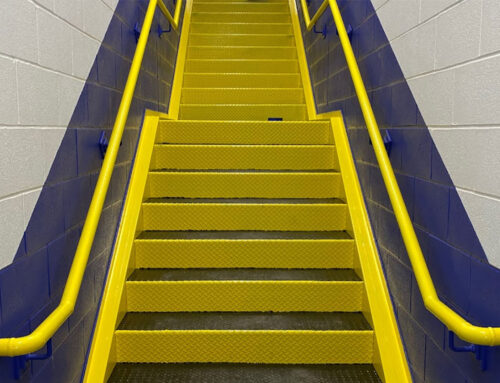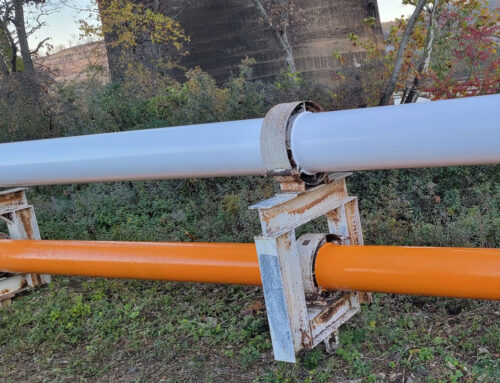Factory painting projects are complex projects that require a lot of planning. Our guide will help you navigate the planning and painting process, making it easier for you.
Preparing for an Industrial Paint Project
A huge part of regular maintenance for industrial facilities is a fresh coat of paint. These services can not only be costly, but they also are often complex. The complexity of these large-scale industrial painting projects can be a huge turn-off. However, when these projects are done right, a factory painting project can add a lot of value to your business.
Follow our guide to see the factory painting process broken down into steps and tasks to follow. Continue reading to see how to prepare for your next industrial painting project.
The Importance of Painting a Factory
Industrial paint jobs are more about function than about looks. Industrial coatings and paints will help improve the safety and performance of your factory.
A factory paint project can increase the longevity of your equipment and of your facility. These projects consist of a lot more than a traditional commercial painting project, which is more for looks and aesthetics more than anything else. Instead, the coatings used are specialized and are a critical part of maintaining your equipment and facilities.
The Planning Process
The first step in the process is to plan out the overall industrial painting project. Proper planning will ensure a smoother and easier painting process.
The first step is to make sure you do not need any permits for the project. In most cases, a permit is not needed to repaint an industrial or commercial facility. Another thing to look into is your insurance policies. In most cases, additional insurance is not needed, but it may be a good idea to make sure the contractor you are hiring has the proper credentials and insurance.
Other important parts of the planning process include appointing a project manager and establishing good communication between the manager of the project and the painting contractor. During the planning process, the contractor should give you a timeframe for the project.
In factory painting, the project manager has a few duties. These duties include:
- Move equipment that is in the way of the project.
- Update all affected team members of the project and keep them informed about any new work routines or procedures.
- Provide adequate access to the facility. This includes things such as access to bathrooms and other things such as on-site electricity, water, and more.
- Take care of hazards and mitigate danger. Address any environmental concerns, such as mold or asbestos before the project starts. Remove any dangerous equipment to prevent additional risks or hazards from emerging.
What is Actually Being Painted?
Another step in the planning process for painting an industrial facility is to inspect the building and set a budget. This will help you determine what actually needs to be painted and the timeline for the project.
Prioritize the items that need to be painted, followed by those that should be when the budget allows it. Having a list of equipment and areas that should not be painted is another important part of this process.
Rust is a sign that something needs to be repainted as soon as possible, as a fresh coat of paint can extend the life of rusted equipment if done properly. Other things that often need to be repainted first are surfaces that are exposed to steam or acid and a refresh of the walls and ceilings.
After the vital areas are addressed, you may consider updating safety coatings and repainting high-traffic areas. You may also need to update paint to ensure your factory is compliant with local, state, and federal regulations.
Budgeting
This starts with receiving bids from different contractors early on in the planning process. It should start with a large estimate of everything that they want to be done, then be narrowed down to fit into the needs of the facility and the needs of the budget.
Selecting Your Paint
Selecting the paint for your commercial or industrial project is part of the job of your painting contractor. In addition, surface prep should also be left to the professionals.
How to Prepare for Fresh Paint
A client should leave the surface preparation process to their hired contractor. Surface preparation is done to remove old paint and even surfaces to ensure the best results possible.
Your contractor should be knowledgeable in many areas of surface prep and asking them questions and providing information about your equipment will ensure nothing is damaged in the process.
Your contractor will know the best way to find the bare metal or factory floor, which rubbing compound and base coat to use, and the best color coats to use on the paint’s surface.
Remember, it is your responsibility to remove or secure any hazardous or dangerous equipment.
You Should Hire a Professional
Painting an industrial facility should always be done by a hired professional. If you want a high-quality paint job, a professional who is familiar with each type of painting is necessary. Early in the process, a Statement of Work should be in writing. These contracts include things like areas to be painted (in detail), restrictions to the project, and project deadlines.
Always look at recent clients, reviews, references, and safety training of prospective contractors before signing a contract.
Contracts
It is important to note that negotiating with contractors is not going to get you anywhere. These jobs are highly specialized and good contractors will have set rates.
Be sure to look into the contract with your legal team. One of the biggest red flags that can occur is a contractor that is unwilling to sign your contractor.
Other Considerations
There is often downtime during an industrial paint job. It is best to let the contractors do their job and keep out of the way. This will save the contractors time and make their job easier, which will save time and money.
Having open communication with your contractor is an imperative part of the process, as well as ensuring the safety of the contractors. Resolve issues that arise right away, such as areas that do not look as good as expected, slow progress, or damaged equipment. Be clear about your expectations upfront, like color-coded work, and paint color in general.
During the project, you should expect daily reports from the contractor. You may even want to drop in to see how the work is going. Keep up the communication with your contractor throughout the entire process.
General Maintenance
Now that the painting project is completed, you need to maintain it. Proper maintenance includes keeping surfaces clean with regimented maintenance standards. Keep your equipment in working order, as leaks and chemicals can decrease the lifespan of your new paint.
Ready to Get Started?
Have questions about your project or need a quote? We’ve got someone ready to help you.



